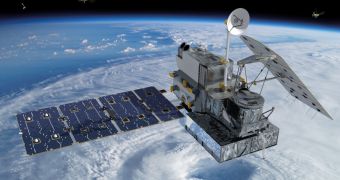The way our planet is changing on account of global warming and other factors is of great interest to the American space agency. This fact is reflected in the five new Earth-observing missions that are scheduled to launch in 2014, the highest number of such initiatives for NASA in a decade.
Two of the launches will see the RapidScat ocean wind experiment and the Cloud-Aerosol Transport System (CATS) instrument delivered and installed aboard the International Space Station (ISS).
The other three launches will see the NASA/JAXA Global Precipitation Measurement (GPM) Core Observatory, the NASA Orbiting Carbon Observatory (OCO)-2, and the NASA Soil Moisture Active Passive (SMAP) satellite joining the American space agency's already-extensive spacecraft fleet.
In addition to managing and commissioning this assets, 2014 will also see NASA Earth science researchers conducting airborne ice measurements over both of our planet's pole, investigating the hurricane season in detail, developing advanced devices for remote sensing, and improving existing climate change and global warming models based on accurate satellite data.
“As NASA prepares for future missions to an asteroid and Mars, we’re focused on Earth right now. With five new missions set to launch in 2014, this really is shaping up to be the year of the Earth, and this focus on our home planet will make a significant difference in people’s lives around the world,” commented NASA Administrator, Charles Bolden.
The GPM Core Observatory is one of the most important missions of 2014. It was developed jointly by NASA and the Japanese Aerospace Exploration Agency, and its main goal is to conduct global rainfall and snowfall measurements to benefit climate models and our understanding of Earth's water cycle.
The NASA Orbiting Carbon Observatory (OCO)-2 will be launched this July to provide Earth scientists with a fresh perspective on the amount and type of carbon dioxide permeating our atmosphere. The satellite is a replacement for the first OCO spacecraft, which was lost at launch in 2009.
The third satellite that NASA will launch in 2014 is the Soil Moisture Active Passive (SMAP) mission, which will take off in November to track the extent to which water is stored in Earth's soils. SMAP will create a global map of soil moisture, to be used in conjunction with other data for climate modeling.
The ISS-RapidScat experiment will be launched into space on June 6. Once installed on the space lab, it will contribute to improving global climate research, as well as meteorologists' weather and marine forecasting abilities.
The Cloud-Aerosol Transport System (CATS) will be launched into space on September 12, aboard a SpaceX Dragon commercial resupply mission to the station. Its three-wavelength lasers will allow for the monitoring and tracking of microparticles released in the atmosphere by dust, smoke, volcanoes and air pollution sources.

 14 DAY TRIAL //
14 DAY TRIAL //